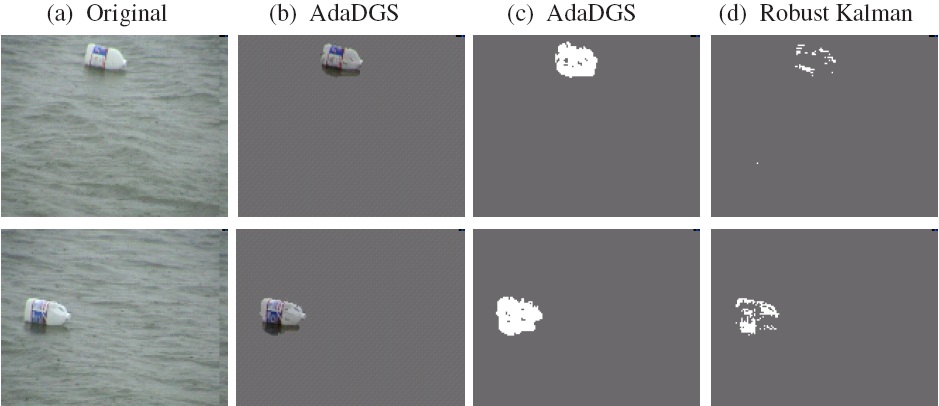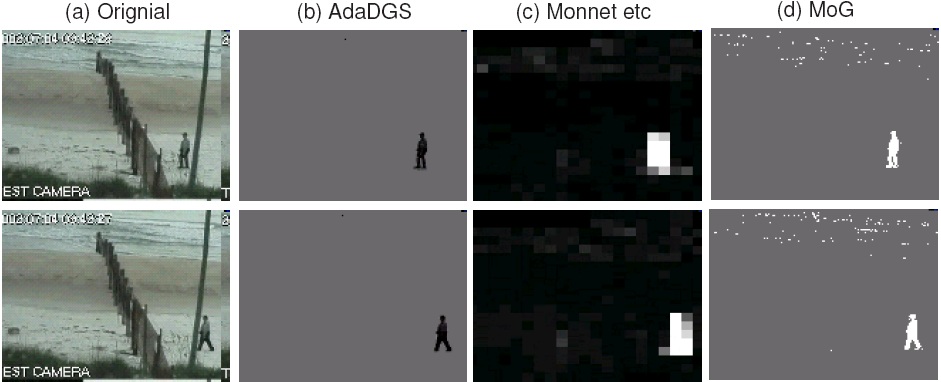.Introduction
Background subtracted images are typical DGS data. They generally correspond to the interested foreground objects. Compared with the whole scene, they tend to be not only spatially sparse but also cluster into dynamic groups, although the sparsity number and group structures are not known. As we know, the sparsity number must be provided in most of current recovery algorithms, which make them impractical for this problem. In contrast, the proposed AdaDGS can apply well to this task since it not only can automatically learn the sparsity number and group structures but also is a fast enough greedy algorithm.
Reference
Junzhou Huang, Xiaolei Huang, Dimitris Metaxas, ”Learning with Dynamic Group Sparsity”, The 12th International Conference on Computer Vision, Kyoto, Japan, October 2009. [SLIDES] [CODE]
Notice: The codes was tested on Windows and MATLAB 2008. If you have any suggestions or you have found a bug, please contact us via email at jzhuang@uta.edu
Video Datasets for Evaluations
We provide datasets used in evaluating background substraction. If you use them in your work, please cite our paper and related rescources correctly.
Original Video
1) "WaterObject" dataset
2) "RainCar" dataset
3) "OceanPerson" dataset
Resulted Video
1) "WaterObject" dataset
2) "RainCar" dataset
3) "OceanPerson" dataset
 |
Figure 3.1 Results
on the "WaterObject" dataset (a) original frame,
(b) background subtracted image with AdaDGS, (c) the binary
maskwith AdaDGS and d) with robust Kalman model |
 |
Figure 3.2 Results
on "RainCar" dataset. (a) original frame, (b) with
AdaDGS, (c) with KDE model, (d) with MoG |
 |
Figure 3.3 Results
on "OceanPerson" dataset. (a) original frame, (b)
with AdaDGS, (c) with Monnet’s method (PCA) and (d)
with MoG |
Related Sources
Tracking With Gaussian Mixture Model
Non-Parametric Model for Background Subtraction
Tracking with a Dynamic Model in a PCA Subspace